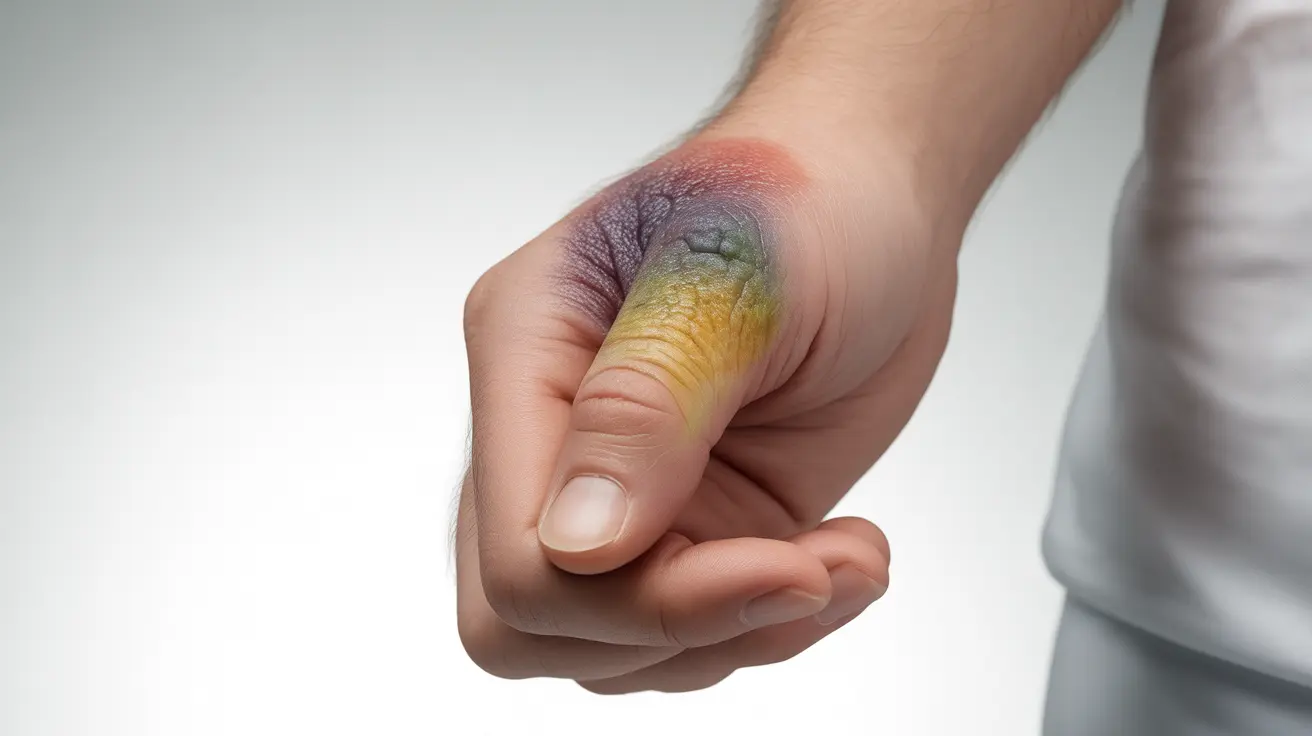A bruised knuckle can be a painful and concerning injury that occurs when the soft tissues around your knuckle joint experience trauma. Whether from accidental impact, sports activities, or other causes, understanding how to properly identify and treat a bruised knuckle is essential for optimal healing and preventing long-term complications.
This comprehensive guide will help you understand the symptoms, treatment options, and warning signs that indicate when professional medical attention may be necessary for a bruised knuckle injury.
Identifying a Bruised Knuckle
A bruised knuckle typically presents with several characteristic symptoms that help distinguish it from more serious injuries. The most common signs include:
- Discoloration around the knuckle area
- Swelling of the affected joint
- Pain when moving the finger
- Tenderness to touch
- Stiffness in the joint
The bruising usually appears within hours of the injury and may change colors as it heals, progressing from red or purple to green, yellow, and brown.
Home Treatment Options for Bruised Knuckles
Immediate and proper care can significantly speed up the healing process for a bruised knuckle. Here are the most effective home treatment methods:
RICE Method
The RICE protocol is particularly effective in the first 48 hours after injury:
- Rest: Avoid using the injured hand when possible
- Ice: Apply cold packs for 15-20 minutes at a time
- Compression: Use a light elastic bandage
- Elevation: Keep the hand raised above heart level
Additional Treatment Measures
Beyond the RICE method, these additional steps can help promote healing:
- Gentle range-of-motion exercises once initial swelling subsides
- Over-the-counter pain relievers like ibuprofen or acetaminophen
- Protection of the injured area during daily activities
Healing Timeline and Recovery
The typical healing period for a bruised knuckle ranges from 1-2 weeks, depending on the severity of the injury and how well you follow treatment protocols. During this time, you may notice:
- Days 1-3: Peak swelling and discomfort
- Days 4-7: Gradual improvement in pain and mobility
- Days 8-14: Continued healing and color changes in the bruise
- Beyond 2 weeks: Complete resolution in most cases
When to Seek Medical Attention
While many bruised knuckles can be treated at home, certain symptoms warrant immediate medical evaluation:
- Severe pain that doesn't improve with home treatment
- Inability to bend or straighten the finger
- Visible deformity of the knuckle
- Numbness or tingling in the affected finger
- Signs of infection (increased warmth, redness, or fever)
Frequently Asked Questions
- What are the symptoms of a bruised knuckle and how can I tell if it's just a bruise and not broken?
A bruised knuckle typically shows swelling, discoloration, and pain with movement but maintains normal alignment. A broken knuckle often involves severe pain, visible deformity, complete inability to move the finger, or grinding sensations. If you're uncertain, seek medical evaluation.
- How should I treat a bruised knuckle at home for faster recovery?
Follow the RICE method (Rest, Ice, Compression, Elevation), take over-the-counter pain relievers, and protect the injury from further trauma. Apply ice for 15-20 minutes several times daily, especially in the first 48 hours.
- How long does it usually take for a bruised knuckle to heal?
Most bruised knuckles heal within 1-2 weeks with proper care. The bruise will change colors as it heals, and pain and swelling should gradually decrease during this time.
- When should I see a doctor for a bruised knuckle, and what are the warning signs of a more serious injury?
Seek medical attention if you experience severe pain, inability to move the finger, visible deformity, numbness, or signs of infection. Also consult a doctor if symptoms don't improve after two weeks of home treatment.
- Can a bruised knuckle be caused by something other than an injury, like a medical condition?
While most bruised knuckles result from direct trauma, certain medical conditions can cause easy bruising or joint inflammation. These include blood disorders, autoimmune conditions, and certain medications that affect blood clotting. If you experience unexplained bruising, consult your healthcare provider.




